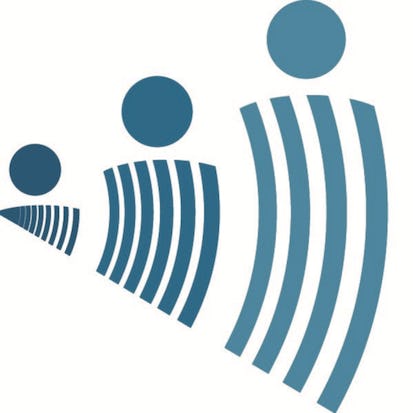- Level Foundation
- Duration 18 hours
- Course by Johns Hopkins University
-
Offered by

About
This course provides an introduction to evaluating public health programs at scale. This course focuses on evaluating public health programs and policies in low- and middle-income countries, however, core skills of designing and carrying out an evaluation are applicable to any public health programs and policies. The course will equip you with skills to: 1. Critique an evaluation of an international health program, identifying its strengths and possible weaknesses and how they could be addressed. 2. Develop a technically-sound evaluation plan for a reproductive, maternal, newborn, child health (RMNCAH) and nutrition program being implemented at scale in a low- or middle-income country, including evaluation design, key indicators, measurement methods, analysis, and communication of results. 3. Guide program managers and donors through a process of agreeing on priority evaluation activities included in an evaluation plan for a specific RMNCAH and nutrition program. 4. Make informed decisions about whether they want to pursue further learning and/or a professional role as an evaluator of large-scale programs. The development of this course was supported by a grant from Government Affairs Canada (GAC) for the Real Accountability, Data Analysis for Results (RADAR) project.Modules
Lesson 1: Welcome to Evaluating Public Health Programs at Scale
1
Videos
- Welcome to Evaluating Public Health Programs at Scale
3
Readings
- Course objectives and syllabus
- Real Accountability: Data Analysis for Results (RADAR) project
- Biographies of course instructors and presenters
Lesson 2: Five Priority Questions for Effectiveness Evaluations
2
Videos
- 5 priority questions for effectiveness evaluations
- Distinguishing among different types of evaluations
1
Readings
- Evaluation designs for adequacy, plausibility and probability of public health programme performance and impact
Module 1 Cumulative Quiz
1
Assignment
- Module 1 Quiz
Lesson 1: What are the steps in designing an effectiveness evaluation of a large-scale program? (Introduction and overview for Module 2)
1
Videos
- Welcome to Module 2
Lesson 2: Engaging stakeholders and describing the program
1
Assignment
- Stakeholders and program descriptions
3
Videos
- Identifying stakeholders in an effectiveness evaluation of a large-scale program
- Stakeholders in an evaluation of Integrated Community Case Management (iCCM) in Burkina Faso
- Resolving different views among stakeholders
1
Readings
- How to develop a comprehensive program description
Lesson 3: How to develop and maintain a program impact model
2
Assignment
- Critique impact models
- Use the RADAR Evaluation Planning Tool to develop an impact model
3
Videos
- How to develop and maintain a program impact model
- Introduction to the RADAR Evaluation Planning Tool
- Evaluation Planning Tool demonstration video
1
Readings
- Common mistakes in developing an impact model
Lesson 4: The “ins” and “outs” of indicators
1
Assignment
- Identify indicators for components of an impact model
1
Videos
- Indicators: What are they and how do you select them?
1
Readings
- An introduction to “SMART” indicators
Lesson 5: Where will the data come from?
2
Assignment
- Explore DHS and MICS data
- Making judgements about indicators and data sources
1
Videos
- Where will the data come from?
1
Readings
- Assessing the quality of existing data for your evaluation
Lesson 6: Review of Module 2
1
Videos
- Review of Module 2
1
Readings
- Demonstration
Module 2 Cumulative Quiz
1
Assignment
- Module 2 Quiz
Lesson 1: Welcome to Module 3
1
Videos
- Welcome to Module 3
Lesson 2: Defining priority questions and the time perspective for effectiveness evaluations
1
Assignment
- Time perspectives in effectiveness evaluations of large-scale programs
2
Videos
- Defining priority questions and the time perspective for effectiveness evaluations
- Time perspectives in the Burkina integrated Community Case Management (iCCM) evaluation
Lesson 3: Attribution, contribution, and counterfactuals
1
Assignment
- Defining comparison groups
1
Videos
- Attribution, contribution and counterfactuals in effectiveness evaluations
Lesson 4: Adequacy, plausibility and probability designs
1
Assignment
- Lesson 4 review quiz
2
Videos
- Evaluation designs based on level of inference
- Probability evaluations
3
Readings
- Evaluating UNICEF's Accelerating Child Survival and Development (ACSD) program
- What if there is not enough money or time to carry out the “best practice” evaluation you have designed?
- How Do You Know If Aid Really Works? Turns Out ... We Often Don't
Lesson 5: Design challenges
1
Videos
- Design challenges in effectiveness evaluations
1
Readings
- Confounders vs. Effect Modifiers
Lesson 6: Review of Module 3
1
Videos
- Review of Module 3
Module 3 Cumulative Quiz
1
Assignment
- Module 3 Quiz
Lesson 1: Welcome to Module 4
1
Videos
- Welcome to Module 4
Lesson 2: Does the program focus on interventions that will have the greatest impact in the program context?
3
Videos
- How many lives will a program save?
- Introducing the Lives Saved Tool (LiST)
- How LiST works
1
Readings
- LiST as a catalyst in program planning: experiences from Burkina Faso, Ghana and Malawi
Lesson 3: Is the program implemented at sufficient strength to achieve expected impact? Are services being utilized by the target population?
1
Assignment
- Lesson 3 Review Quiz
4
Videos
- Assessing the strength of program implementation
- Introducing the RADAR implementation strength assessment tools
- Assessing utilization
- The health systems context for program evaluation
Lesson 4: Are interventions and services delivered at levels of quality sufficient to achieve expected impact?
1
Assignment
- Lesson 4 Review Quiz
3
Videos
- Assessing the quality of service provision
- Introducing the RADAR quality of care assessment tools
- Assessing the quality of family planning services in Malawi
Lesson 5: Are those who need the services actually receiving them?
1
Assignment
- Lesson 5 Review Quiz
3
Videos
- What is coverage and how do you measure it?
- Improving coverage measurement
- Introducing the RADAR coverage survey tool
Lesson 6: Is the program achieving its expected impact?
1
Assignment
- Lesson 6 Review Quiz
1
Videos
- Estimating program impact
1
Readings
- Understanding measures of nutritional impact
Lesson 7: Review of Module 4
1
Videos
- Review of Module 4
Module 4 Cumulative Quiz
1
Assignment
- Module 4 Quiz
Lesson 1: Welcome to Module 5
1
Videos
- Welcome to Module 5
Lesson 2: Preparing a measurement plan for the evaluation
1
Peer Review
- Develop a measurement plan for an evaluation
2
Videos
- Developing a measurement plan for the evaluation
- The ethical review process
Lesson 3: How to analyze and synthesize the results of an evaluation
1
Peer Review
- Develop a analysis plan for an evaluation
2
Videos
- How will you analyze the evaluation data?
- Case studies of analysis plans from Rwanda
Lesson 4: Applying an equity lens to your evaluation design and analysis plan
1
Assignment
- Lesson 4 Review Quiz
3
Videos
- Addressing equity issues in your evaluation
- Understanding equity results
- Measuring and incorporating gender in evaluations
Lesson 5: Promoting the uptake and use of evaluation results
1
Videos
- Will your evaluation contribute to improved public health?
1
Readings
- Encouraging the use of evaluation findings
Lesson 6: Review of Module 5
1
Videos
- Review of Module 5
Module 5: Cumulative Quiz
1
Assignment
- Module 5 Quiz
Lesson 1: Reflection on the evaluation of iCCM in Ethiopia
2
Videos
- Part 1
- Part 2
2
Readings
- WHO/UNICEF Joint Statement on integrated community case management of childhood illness
- Effects of the integrated Community Case Management of Childhood Illness Strategy on Child Mortality in Ethiopia: A Cluster Randomized Trial
Lesson 2: Gaining further skills as a professional evaluator
2
Readings
- What have you learned about being a professional evaluator of large-scale programs?
- Avenues for further learning about evaluation
Final Course Assessment
1
Assignment
- Final Assessment
Auto Summary
"Evaluating Public Health Programs at Scale" is an essential course designed for individuals interested in mastering the evaluation of public health initiatives, particularly in low- and middle-income countries. Offered under the Health & Fitness domain, this foundational course is perfect for those aiming to develop critical skills in assessing large-scale health programs and policies. Led by expert instructors from Coursera, the course delves into the intricacies of creating and executing robust evaluation plans for reproductive, maternal, newborn, child health (RMNCAH), and nutrition programs. Participants will learn to critique evaluations, develop comprehensive evaluation strategies, and effectively communicate findings. Additionally, the course prepares learners to guide stakeholders in prioritizing evaluation activities and supports informed decision-making for those considering a career in program evaluation. Supported by a grant from Government Affairs Canada (GAC) for the RADAR project, this 1080-minute course is offered through Coursera's Starter subscription. It targets public health professionals, program managers, and anyone aspiring to enhance their expertise in evaluating health programs at scale, equipping them with the knowledge and tools needed to make meaningful contributions in global health evaluation efforts.

Agbessi Amouzou

Neff Walker


